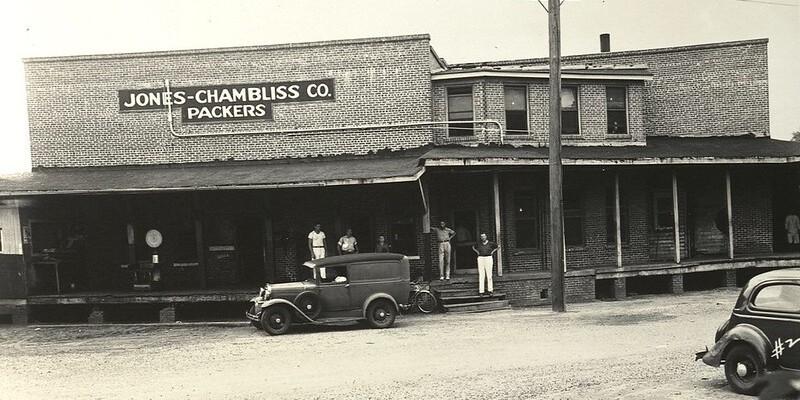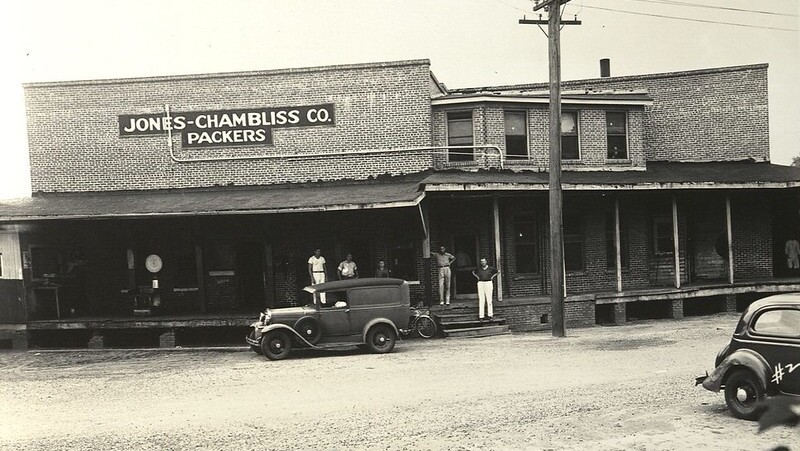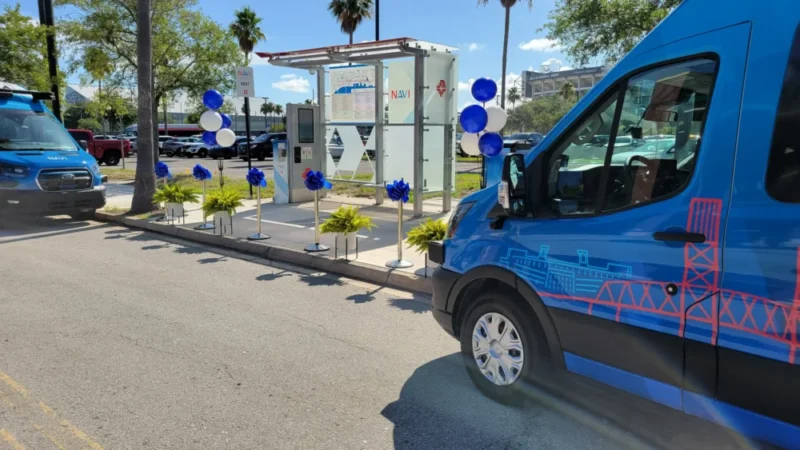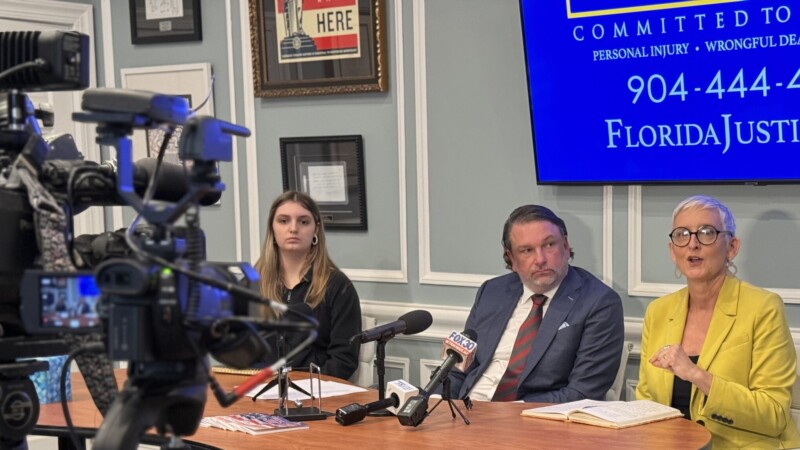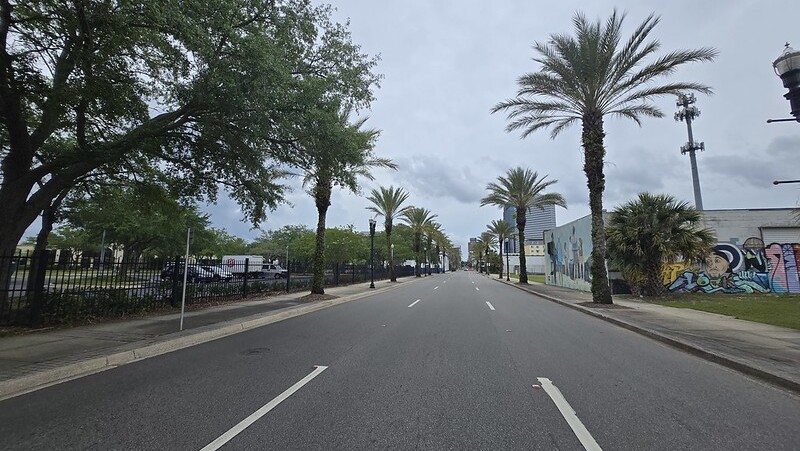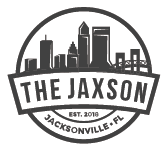
For nearly a century, Jones-Chambliss Meat Packing was a major employer and smelly beehive of activity in Jacksonville’s Mixon Town neighborhood. Here is a look at the legacy of this early 20th century urban core slaughterhouse.
The Beginning

The Jones-Chambliss Co. was officially incorporated in January 1911 with a capital investment of $30,000. The company name was a fusion of its founders’ names, Charles A. Jones and John O. Chambliss.
That same year, Chambliss partnered with Walter and William Graddick, Barney Hart, Robert Stewart and William Smith to establish the Jacksonville Cattle Co. at 406 Forest St. Situated in the heart of an established African-American neighborhood, the business began as a slaughterhouse. In July 1916, a one-story brick abattoir, designed by Prairie School architect Ransom Buffalo, was added just east of the Atlantic Coast Line railroad crossing. Buffalo is recognized for his residential designs in the Riverside area.
By 1920, Chambliss had become the company’s president. In 1921, he reunited with Jones, along with Alfred H. Goedert, to form Jones-Chambliss Meat Packers, which took over operations at the Forest Street facility. The company focused on wholesale slaughtering and meat packing, distributing products under the name Better Brand Products.
Growth and industrial expansion

In 1937, the facility expanded with a two-story, reinforced concrete structure faced in brick. A cattle pen was added at the rear of the property to confine livestock. Due to increasing demand, further expansions followed in 1938 and 1939. By 1940, the site encompassed a dog food plant located north of the 55,390-square-foot slaughterhouse, along 141 Pleasant St.
Life inside the plant was arduous. Former worker Marie Hendricks Brooks recalled:
“I left home (Union County, Fla.) in the fall of 1935 to look for work with 65 cents and a pair of shoes borrowed from Mabel Forsythe. I never had an opportunity to return the shoes—I wore them out! Eventually, I found a job at Jones Chambliss Meat Packing Company making wieners at 20 cents per hour. The work was hard and nasty.”
In 1949, employees affiliated with the United Packinghouse Workers of America went on strike, demanding better pay and working conditions.
Military contracts and peak operations

Under the leadership of Alfred H. Goedert, the company secured contracts with the U.S. Navy and Air Force, prompting major expansion. In 1963, a boiler house, additional office space, and a warehouse were constructed.
Three years later, the company launched Henry’s Hickory House, a meat and bacon slicing facility on the west side of the railroad. This 28,000-square-foot factory was designed by John L. Goedert, Alfred’s son, who had served in both World War II and the Korean conflict. John took charge of construction and plant development.
Decline and Industry Challenges

The 1970s marked the beginning of decline. In 1973, federal price controls disrupted the meatpacking industry statewide. More than 200 workers were laid off across Florida, including 60 from Henry’s Hickory House. In an interview with the Sarasota Herald-Tribune, Alfred Goedert lamented:
“We can’t get supplies, and when we can, prices are not economical. We’re definitely feeling the price freeze. In the 36 years I’ve been in the meatpacking business, this is the roughest I’ve ever seen. We bring in fresh pork bellies to make sliced bacon, but we have to pay 7 cents more a pound than we did before the freeze began.”
In 1980, the original 43-year-old brick slaughterhouse was shut down, leaving Henry’s Hickory House as the sole remaining operation.
Transition to Bubba Foods and new uses

In 1988, the Goedert family sold the site, including the inactive Jones-Chambliss plant and the operating Hickory House, to William “Billy” Morris for $500,000. In 2000, Hickory Foods, LLC. acquired Bubba Burgers from its founder Walter “Bubba” Eaves, forming Bubba Foods, LLC.
The company produces frozen BUBBA Burgers and BUBBA Hickory Smoked Bacon, distributed throughout the U.S., Puerto Rico, the Bahamas, and through military commissaries globally. By 2001, the Jacksonville facility produced over 31 million pounds of bacon annually, processing 600,000 pounds per week. At its peak, the plant was Florida’s largest bacon producer, employing 140 workers and supplying regional brands such as Tom & Ted’s. Across the tracks, most of the original Jones-Chambliss meat packing plant was demolished in 2002.
In 2010, Bubba Foods, LLC expanded their Elberton, Georgia, plant and acquired another meat processing plant in Hastings, Nebraska. By the end of that same year, operations ceased at the Jacksonville property after a century of around-the-clock activity.
A sweet new chapter

In 2012, Morris acquired Peterbrooke Chocolatier, a Jacksonville-based chocolate company. Three years later, in 2015, Peterbrooke transformed the 28,000-square-foot abandoned Hickory House plant into its headquarters and production facility, marking a new chapter in the life of this historic industrial site.



